I take a close look at the T47 standard including a variety of models brands can choose from.
2021 is the year the cycling world got serious about the T47 bottom bracket standard.
Specialized released their S-Works Tarmac SL7 2021 ; Trek, their Emonda SLR and SL. Trek will also use T47 more widely across their road range in the future.
Introduced as ‘yet another standard’ in 2015, T47 looks like becoming an increasingly important bottom bracket type in the years ahead.
CONTENTS
What is a T47 Bottom Bracket?
Can You Cut T47 from PF30?
T47 BB Survey—what are the types?
T47 Bottom Bracket Installation Techniques & Issues
T47 24mm Spindle
T47 Eccentric Bottom Bracket (Unique Design)
WHAT IS A T47 BOTTOM BRACKET?
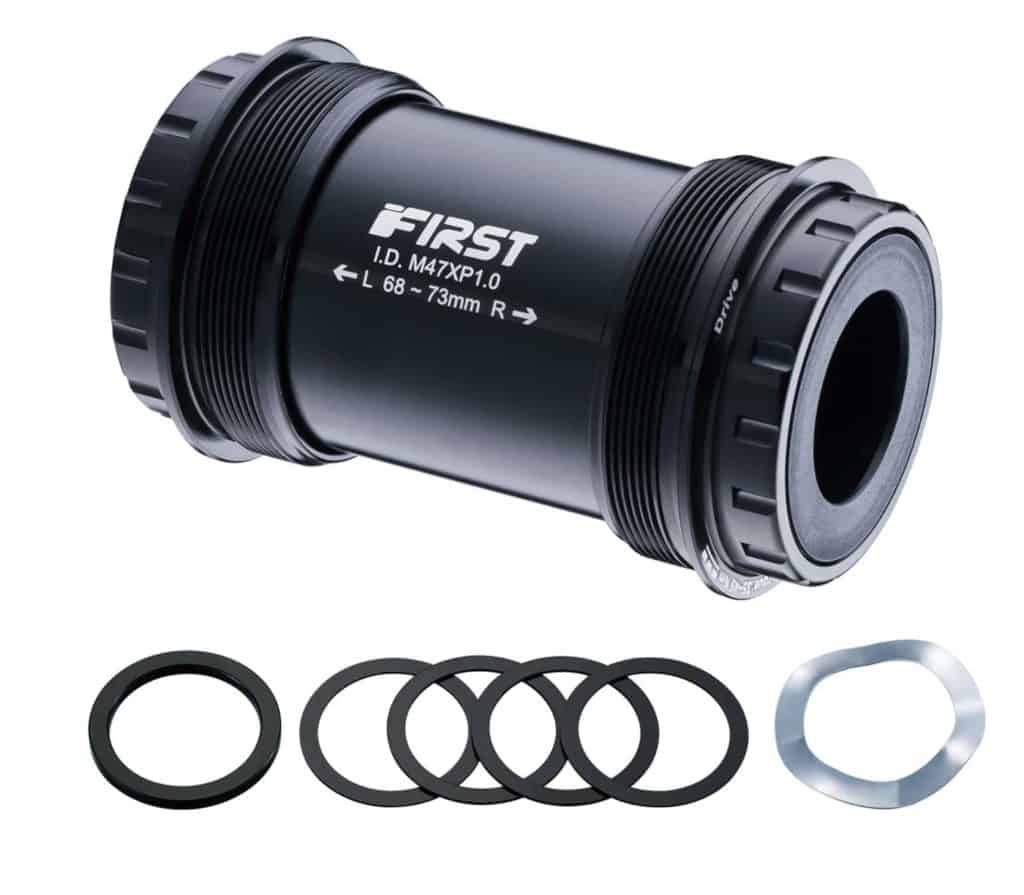
A T47 BB is a PF30 BB shell into which threads have been cut.
A PF30 bottom bracket shell’s internal diameter is 46mm. Cutting threads into it gives you an official specification of M47 x 1.0mm.
The drive-side cup is a left-hand thread; the non-drive side is a right-hand thread—an English-threaded setup in other words.
Threaded Bottom Brackets are Rock-Solid
I have argued elsewhere that threaded bottom brackets (mainly BSA/English at 34.8mm diameter BB shell) are the best bottom brackets.
The extended helical ridge that defines the thread of a screw or bolt is one of the most important advances in the history of mechanics.
A threaded screw or bolt stays where it is put until you remove it or where extreme stress strips away the ridges.
Stripping thread is extremely unlikely when you are installing a nut onto a bolt, but more likely when installing a bottom bracket’s broader surfaces (shell and BB unit) into the BB shell, where due care is not taken.
As long as simple steps are taken to avoid cross threading,T47’s turning the largest press fit bottom bracket available to date into a threaded model may turn out to be a defining moment in bottom bracket design.
Nightmare of Proliferating Standards
Press fit bottom bracket design copies integrated headset design where bearings are inserted directly into the frame.
The original BB30 was a direct translation of this concept from the head tube into the bottom bracket shell.
When problems with BB30 emerged, a solution was to place the bearings in cups and press these into the shell, just as cups were pressed into head tubes prior to the integrated headset revolution.
Thus we’ve ended up with 41, 42, and 46mm bottom bracket shells, an evolution which has taken us from the original BSA 34.8mm ID BB shell to a 46mm shell.
If anyone had set out to design a new standard prior to this evolution taking place, it’s doubtful that 46mm would have been the size selected. The ideal diameter would have had to be larger—but probably not this large.
Boutique frame builders, notably those using titanium and steel (see the extended section on installation below into a steel frame) were early adopters of T47 BBs although the bigger brands are slowly releasing models using T47.
And despite the limited adoption of T47 aluminum shells into carbon frames to date, bonding alloy shells into carbon frames is a mature process, so expect to see an uptick in offerings from carbon frame makers in the near future.
CAN YOU CUT THREADS into a 46mm SHELL to CREATE a T47 BB?
A lot of T47 commentary claims you can “simply” or “easily” cut threads into a PF30 shell into which you can then install a T47 BB.
The problem here is that carrying out the procedure will cancel out your warranty in most cases.
Altering the BB shell in this way is a significant alteration of the frame. Few if any manufacturers would continue to honor warranty under those conditions.
The idea of cutting threads usually comes about in the context of fixing ill-fitting press fit bottom brackets and the oft-reported creaking problem.
Commentators lay the blame on sloppy manufacturing tolerances. If manufacturers would produce bottom brackets with the standardized precision the bring to headset manufacturing, there would be no problem.
However, you can’t equate headsets in head tubes to bottom brackets in bottom bracket shells. An integrated headset’s sealed bearing drops into place on top and snugs into position at the fork crown—hardly precise.
In contrast, a press fit bottom bracket by definition must be pressed into the shell. Tolerances are tight, although not tight enough for the critics.
The force exerted on the bottom bracket/frame interface during pedaling is extreme, and it must endure stresses that exceed the strain exerted on headsets many times over.
Threaded bottom brackets were a non-problem solved with the introduction of press fit. T47 arguably improves on press fit …. by eliminating press fit.
And this return of threaded BBs via T47 improves on the BSA standard by giving us larger bearings and a beefier connection amongst the shell and the chain stays, seat tube, and down tube.
The larger surface area at this junction also cancels out a possible weight gain as it allows tubing with thinner walls, opening up a new frontier of frame design possibilities.
T47 BOTTOM BRACKET SURVEY
In this section I cover several T47 Bottom Bracket types.
FIRST Components makes designs for both traditional 24mm spindles and 30mm spindle cranks, for either internal or external installation.
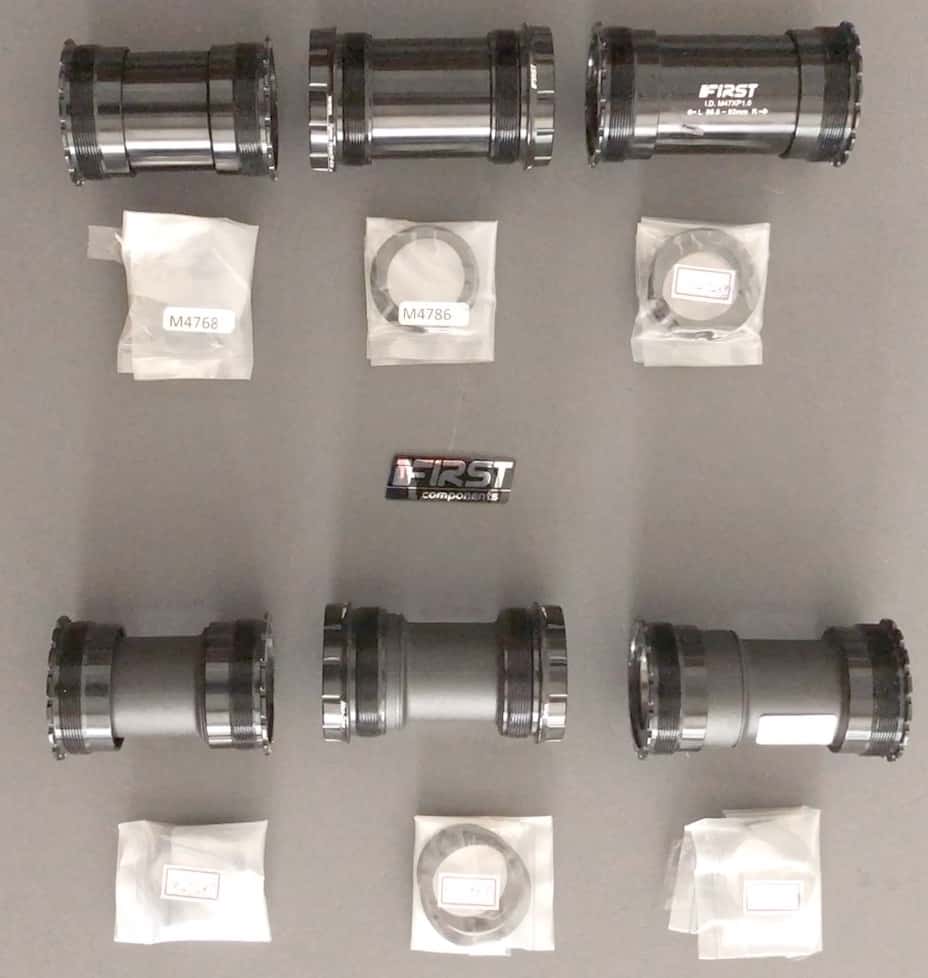
Each model comes with variously sized spacers in order to accommodate a wider range of cranks.
The 24mm crank range pictured is divided into the BBs with aluminum sleeves at the top, and plastic sleeves below.
Plastic sleeves can be drilled which enables internal cables to be more easily routed through the BB shell.
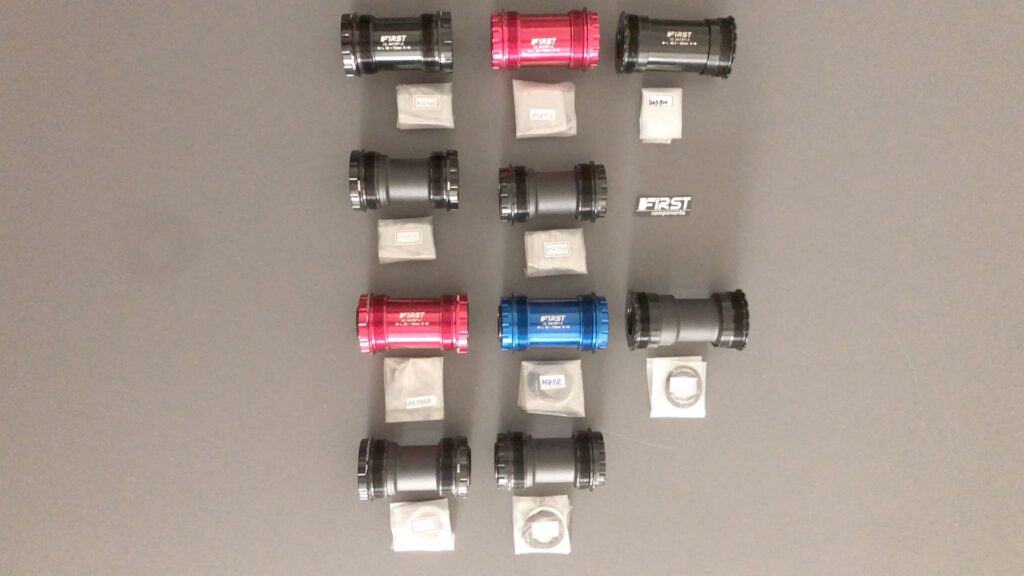
Internal vs External (Outboard) Installation
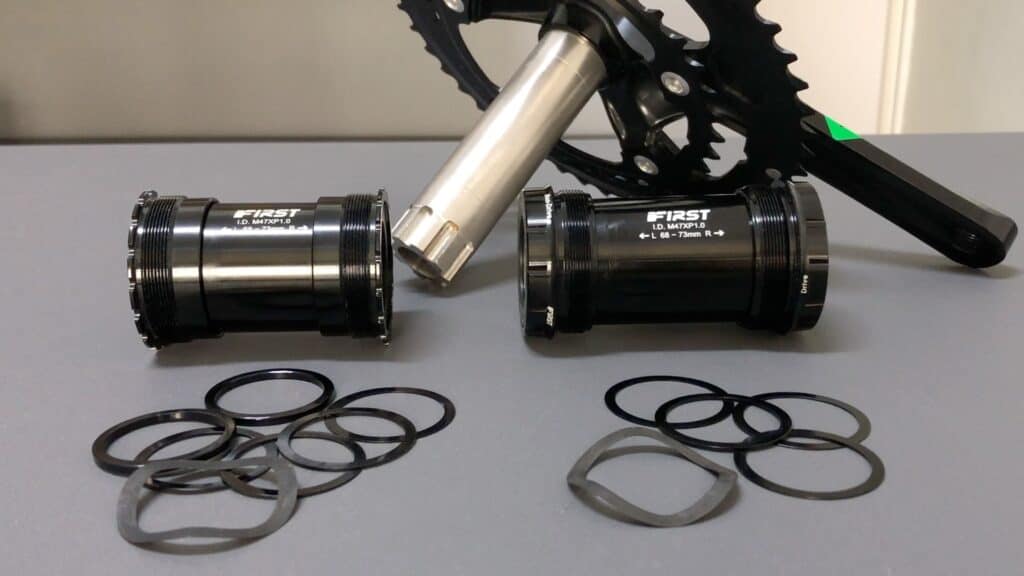
T47 bottom bracket bearings are either installed into the the bottom bracket shell or located externally as “outboard” bearings (the unit on the right).
Which is better comes down to personal preference.
The advent of integrated cranks, 24mm spindles, and bearings mounted in externally located cups allowed the use of larger bearings in the BB and thus greater bearing longevity. The spindle was also stiffer due to the hollow design’s larger diameter.
The only upgrade to make for a 34.8 (“BSA”) BB shell was originally from a solid-spindle cartridge to an integrated spindle with external bearings which provided a noticeable performance boost.
But the 46mm T47 internal diameter gives you an extra 11.2mm of diameter as well as the larger externally mounted bearing.
A cartridge BB sealed bearing’s outer diameter is 30mm; an outboard bearing’s OD is 40mm; a T47 internal BB sealed bearing’s OD is 42mm giving a 2mm advantage over the traditional outboard bearing.
Thus, although there’s no clear advantage to installing the external unit compared with the internal unit, you have the option nonetheless.
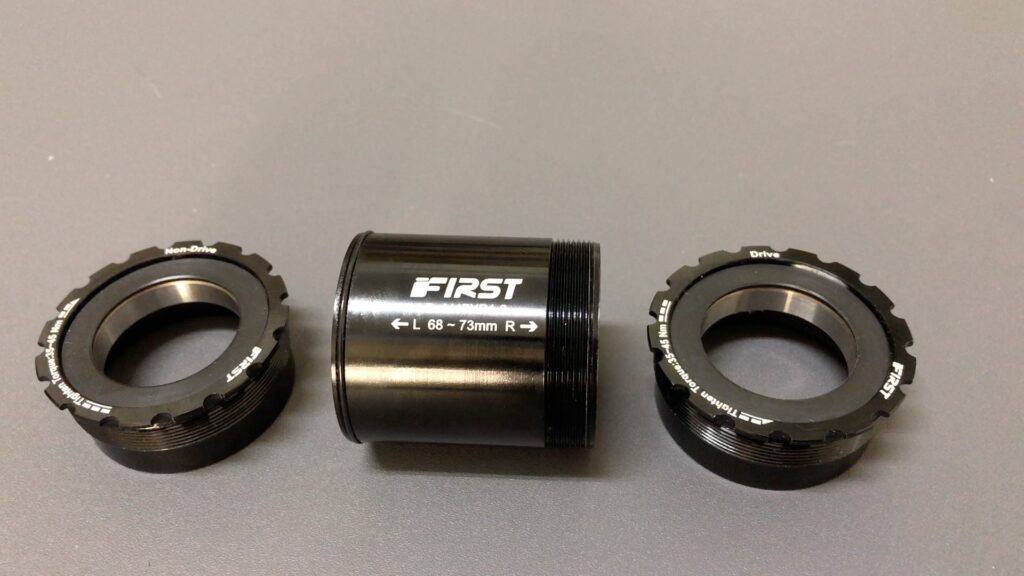
The aluminum sleeve on these internal cups screws into the drive side.
If weight is an issue, you could do away with the sleeve, although losing the protection against the entry of water and grit is not a good trade off for the minimal weight saving.
T47 BOTTOM BRACKET INSTALLATION
The great news is you no longer need one of the often complicated press-fit toolkits to seat the bearing cups in the BB shell.
Beware Cross Threading
Provided your frame maker’s bottom bracket shell is precisely machined to spec, you screw the T47 BB cups into the shell, then tighten with the correctly fitting wrench.
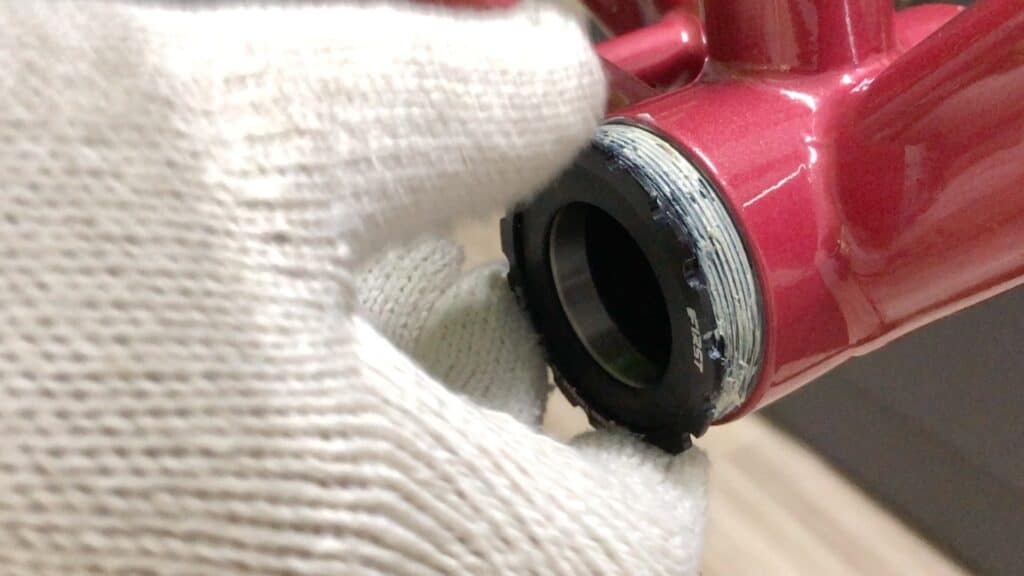
The danger with threaded bottom brackets is cross-threading the cup into the shell. You need to seat the bearing cup exactly into the shell’s threads before screwing the cup very far into the shell.
Even if a threaded bottom bracket cup appears to be perfectly aligned with the BB shell and turns with just a little resistance, it could still be cross-threaded.
T47 bottom brackets, much larger than their threaded cartridge cousins and noticeably shift onto an angle, out of square to the BB shell.
One technique that works well to seat the BB cup in the BB shell making sure the threads are aligned on the drive side is to turn the cup to the left, first of all, then to the right, against the thread.
You will feel, as well as hear, a ‘click’ or a ‘clunk’ as the cup threads align with the BB shell threads.
It often takes several turns to the left and right before you feel the alignment; then you proceed to turn the cup smoothly to the left all the way into the shell.
With the non-drive side turn the cup to the right first, then the left.
Once you feel that the alignment is right, complete the installation.
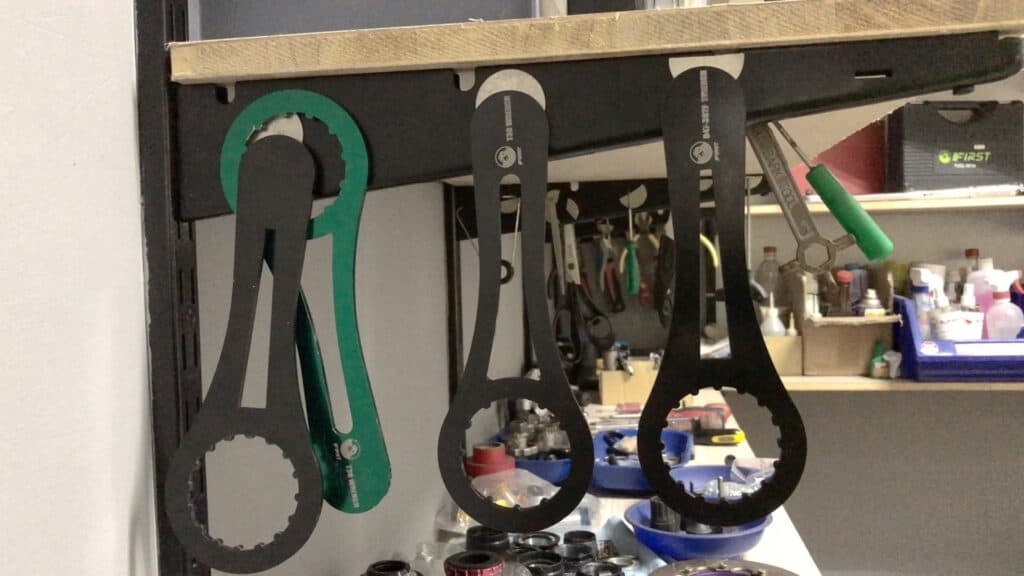
These are the wrenches FIRST Components supplies with T47 bottom brackets, and any of the non-standard designs in our range for that matter.
What About Torque?
For the internal T47 BB we use the tool on the far right; the tool (Y30) to the left fits the external BB cups which I’ll look at below.
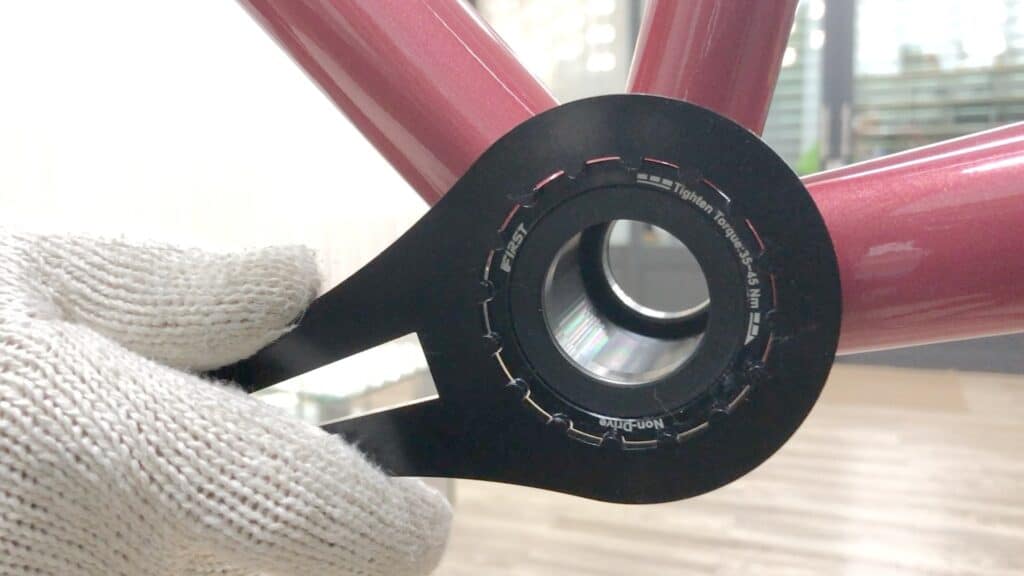
The flange offers 2mm of surface which means you must hold the tool square to it to gain maximum leverage.
The recommended torque is standard for threaded bottom brackets: a minimum of 35 Nm, maximum of 45 Nm.
How do you know you’ve reached tolerance? A person of average strength exerting full force will reach a torque of 35+ Nm.
You will never over-tighten with this tool. Using a glove or soft cloth on the handle in conjunction with a good pull, the cup will be tight enough.
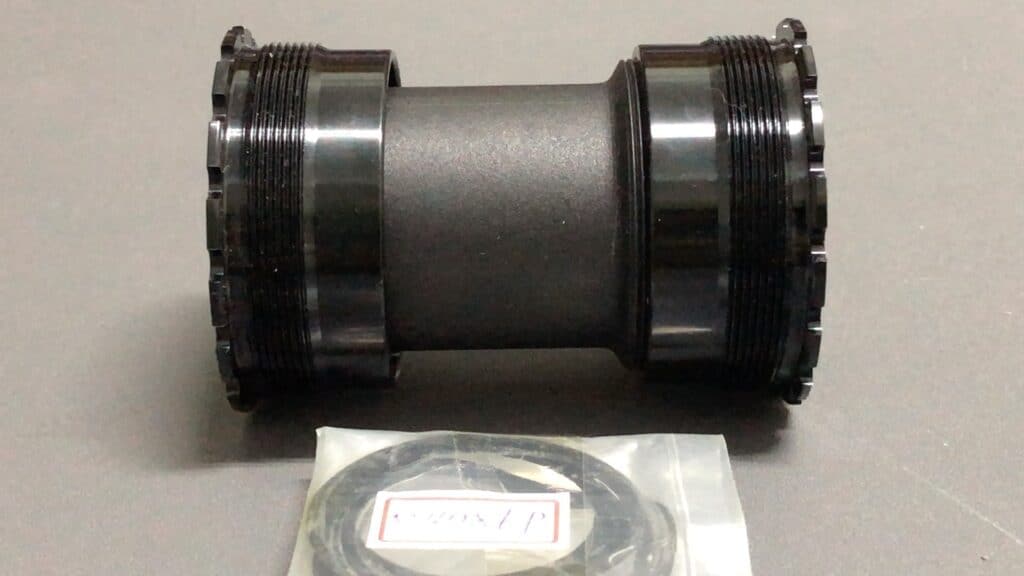
An example of the plastic sleeve available in place of the aluminum sleeve. Plastic is lighter if weight really is a concern.
24mm External T47 BB
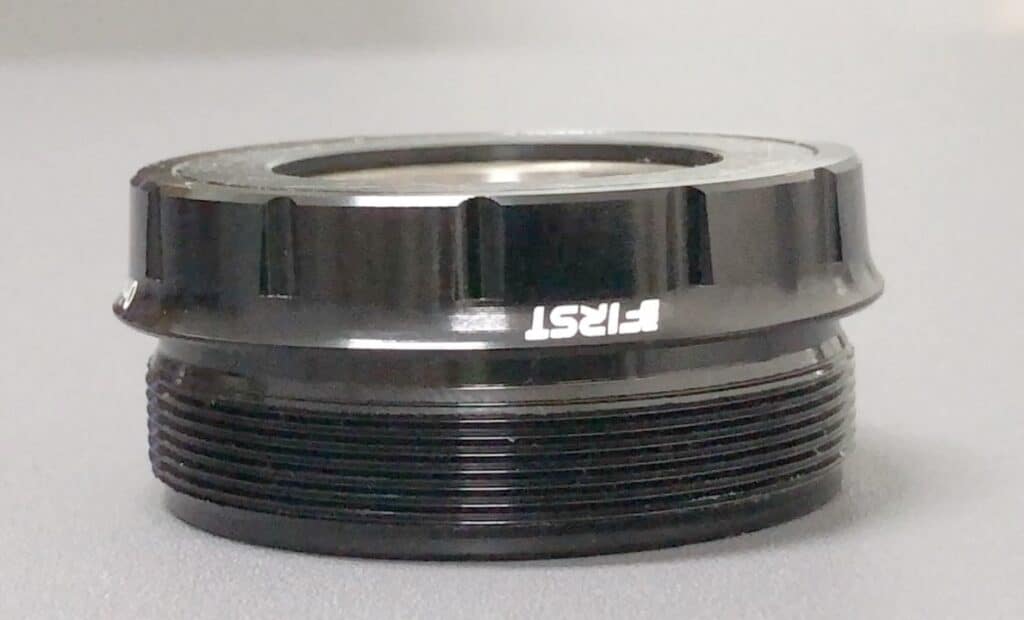
The external or outboard bearing version has two cups and an alloy sleeve.

The sleeve screws into the drive side. Or you could opt to just install the the cups.
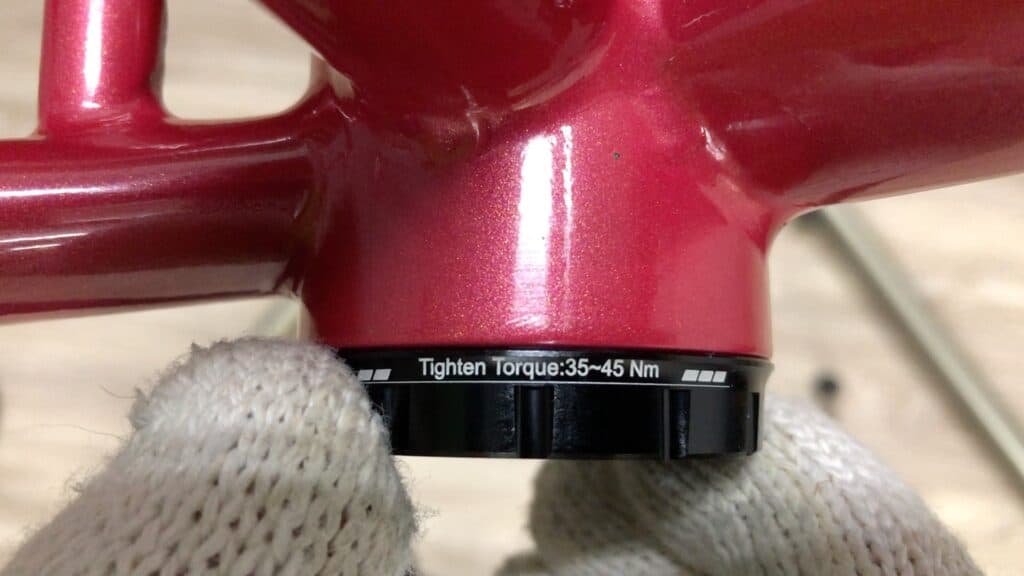
Unlike the internal T47 BB’s 1mm for the tool to slot into, a 5mm surface is available on the external T47 cup.
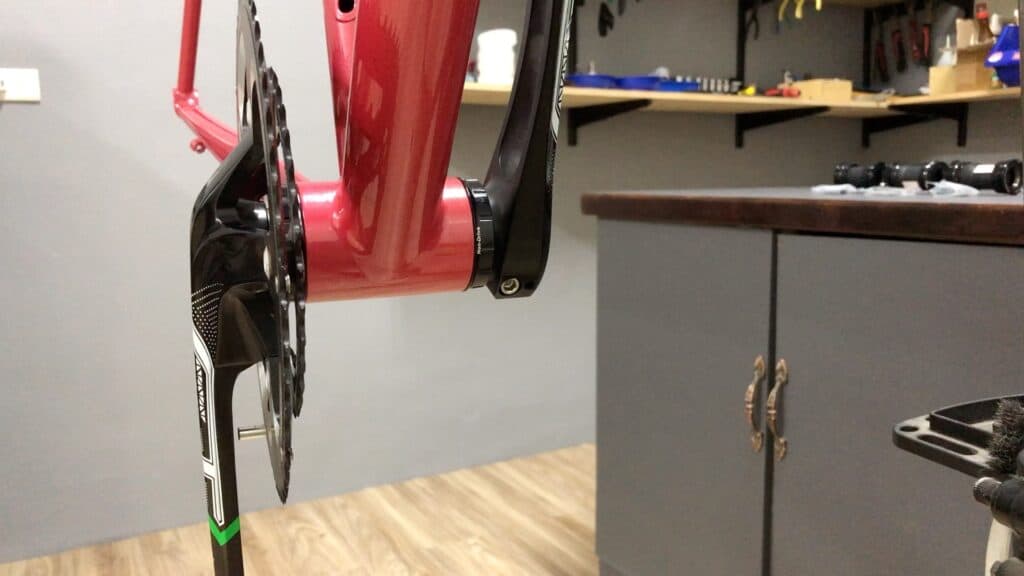
Fully assembled with the 30mm crank fitted.
T47 24mm ADAPTER
The option exists to add 24mm adapters to a 30mm spindle unit. Each adapter has a 30mm outer diameter, and 24mm inner diameter.
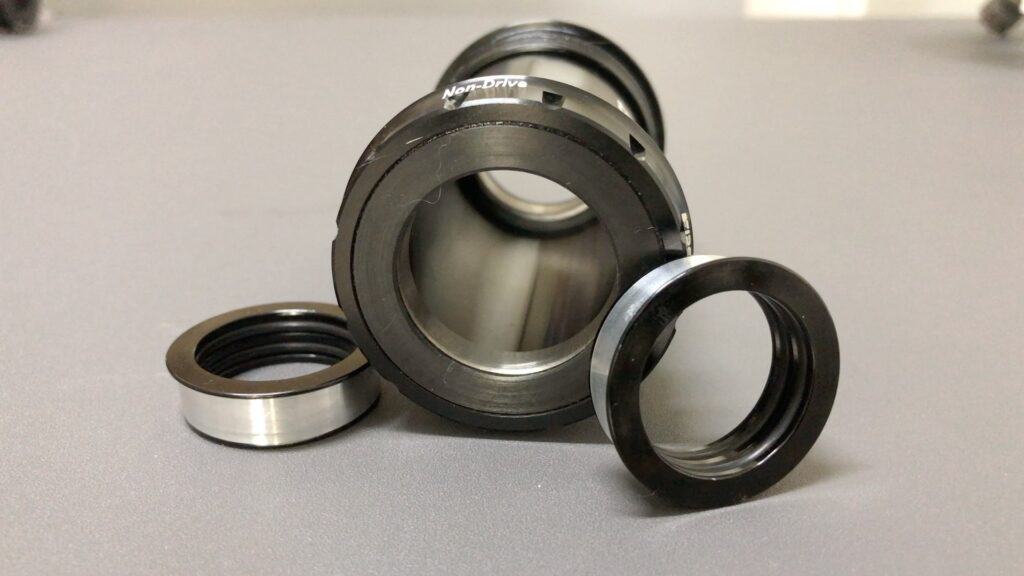
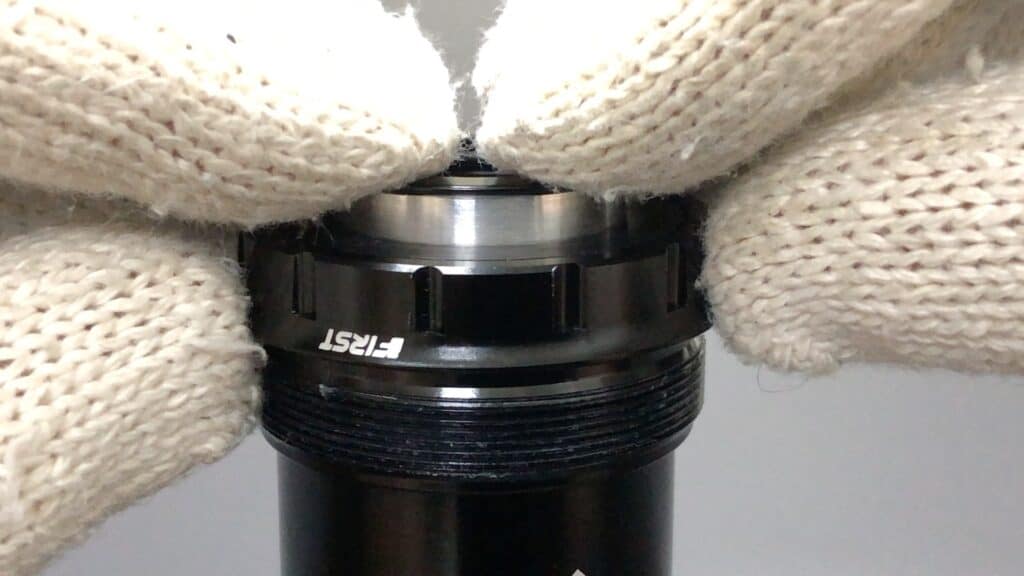
Applying even pressure on alternate sides of an adapter maneuvers the adapting piece into the 30mm ID cup.
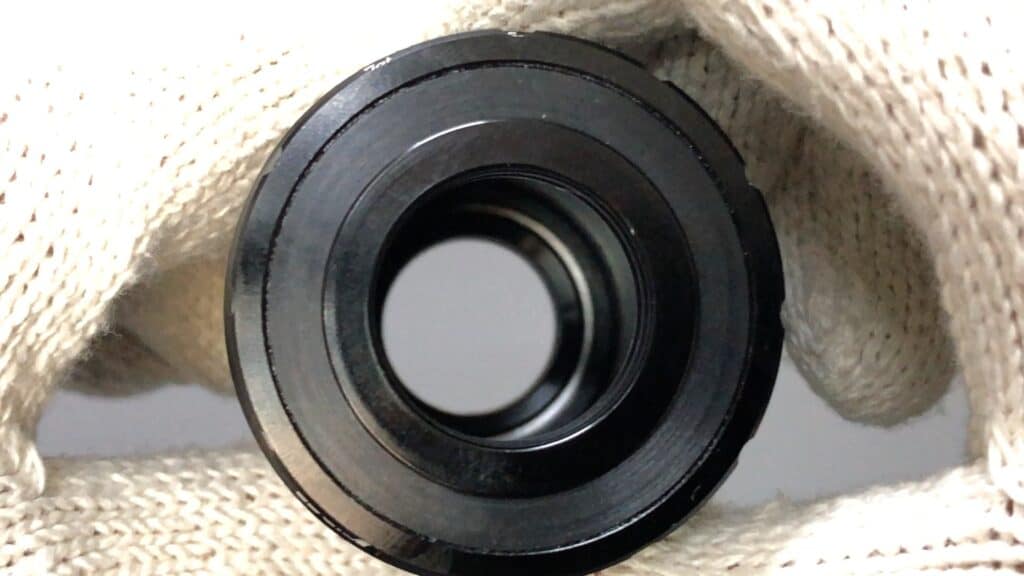
The fit is tight, but not too tight. To remove you need a vice to hold the cup, then lightly tap the inside face from the opposite side evenly the way round.
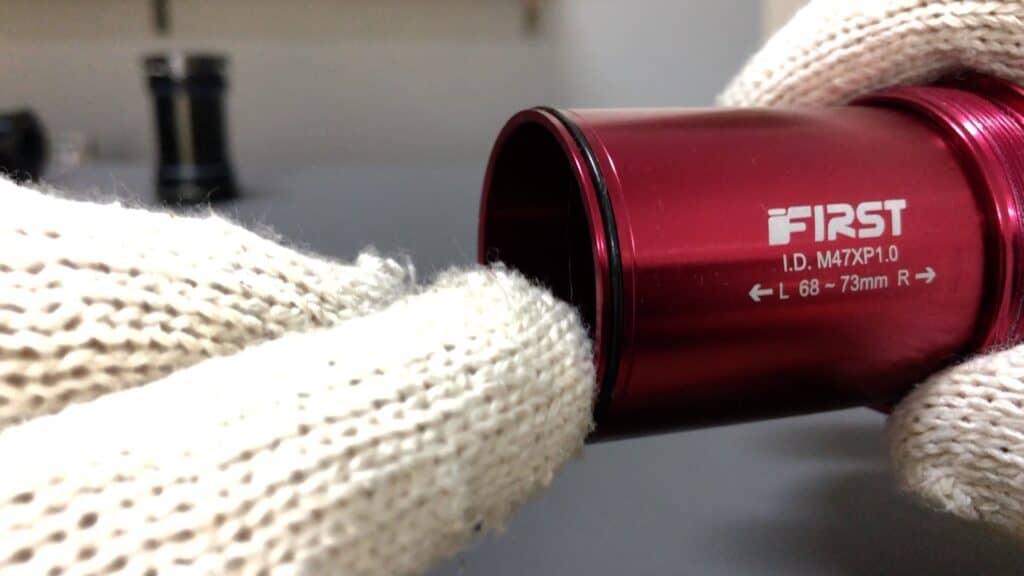
An alloy sleeve either screws into, or is permanently attached to the drive-side cup.
An important part of the sleeve-to-cup connection on the non-drive side is the rubber seal which fits into the end-groove. Without the seal, the connection is too loose and would rattle in use.
The seals are durable, but can be easily stretched into position should one perish.
T47 ECCENTRIC BOTTOM BRACKET
An eccentric bottom bracket enables you to raise and lower the spindle height, and thus the crank and pedal height.
Raising and lowering in this way also changes the chain tension.
So an EBB can be used for either purpose.
T47’s large size makes it perfect for a wide range of niche bikes such as tandems.
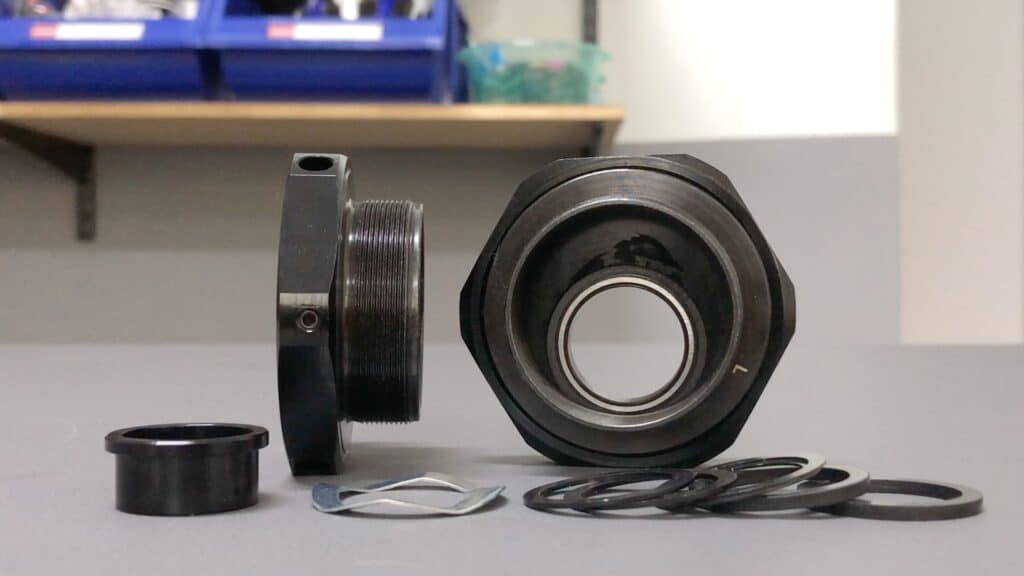
This design mimics FIRST Components’ popular BSA EBB.
An off-center core housing the sealed bearings rotates within the main, hexagonally shaped, shell.
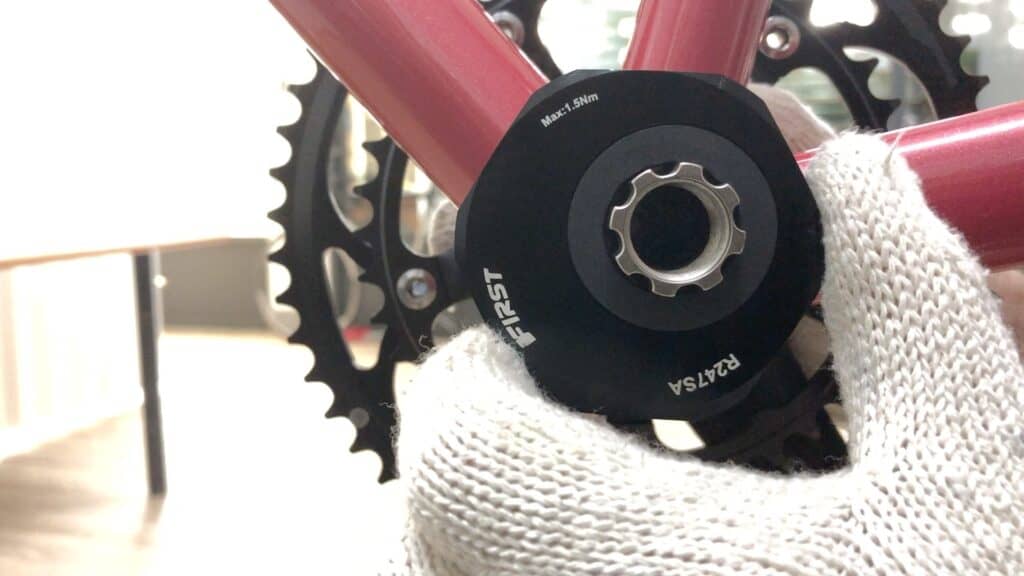
Here it’s rotated almost to the top.
The technique is to rotate both sides together as one so both ends of the spindle remain parallel. If not, one side gets ahead of the other the result being neither will turn.
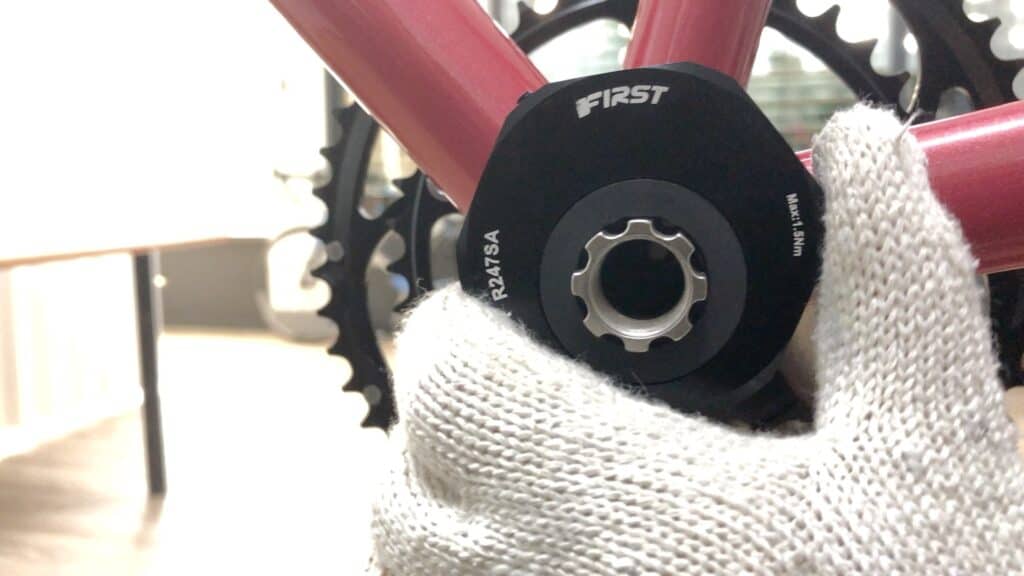
Rotated almost to the bottom.
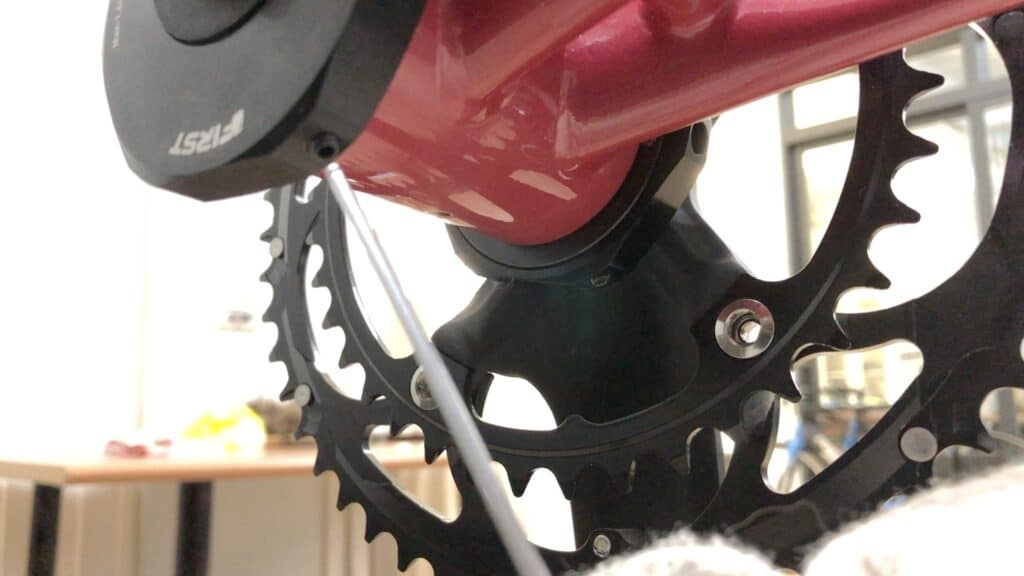
Tightening the 2mm Allen bolts equidistant on three of the hexagon’s six vertices, prevents the inner housing from rotating.
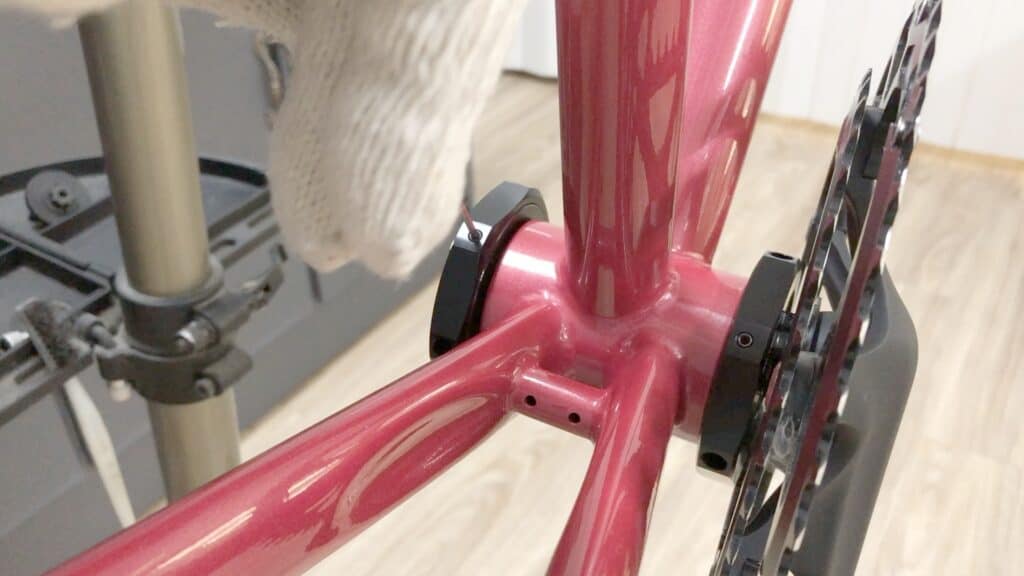
The large holes on the hexagon’s alternate vertices are for the tool used to tighten the cups into the BB shell—the curved end of the tool hooks into them providing leverage against the flattened edges.
PARTING THOUGHTS
In 2015 when T47 Bottom Brackets were first launched as ‘yet another standard’, plenty of people dismissed the return of threaded bottom brackets in this form.
Five years later with a cycling public fed up with the shortcomings of press fit BBs, the new standard is set to take off, simplifying and rationalizing bottom bracket design, making life easier for cyclists, brands, and manufacturers.

1 Kommentare zu „T47 Bottom Brackets Guide – 24mm, 30mm (& Unique T47 EBB)“
Will the eccentric T47 BB work on a frame with 86.5mm T47 spacing? I.e. can you use it as a replacement for an internal T47 BB?